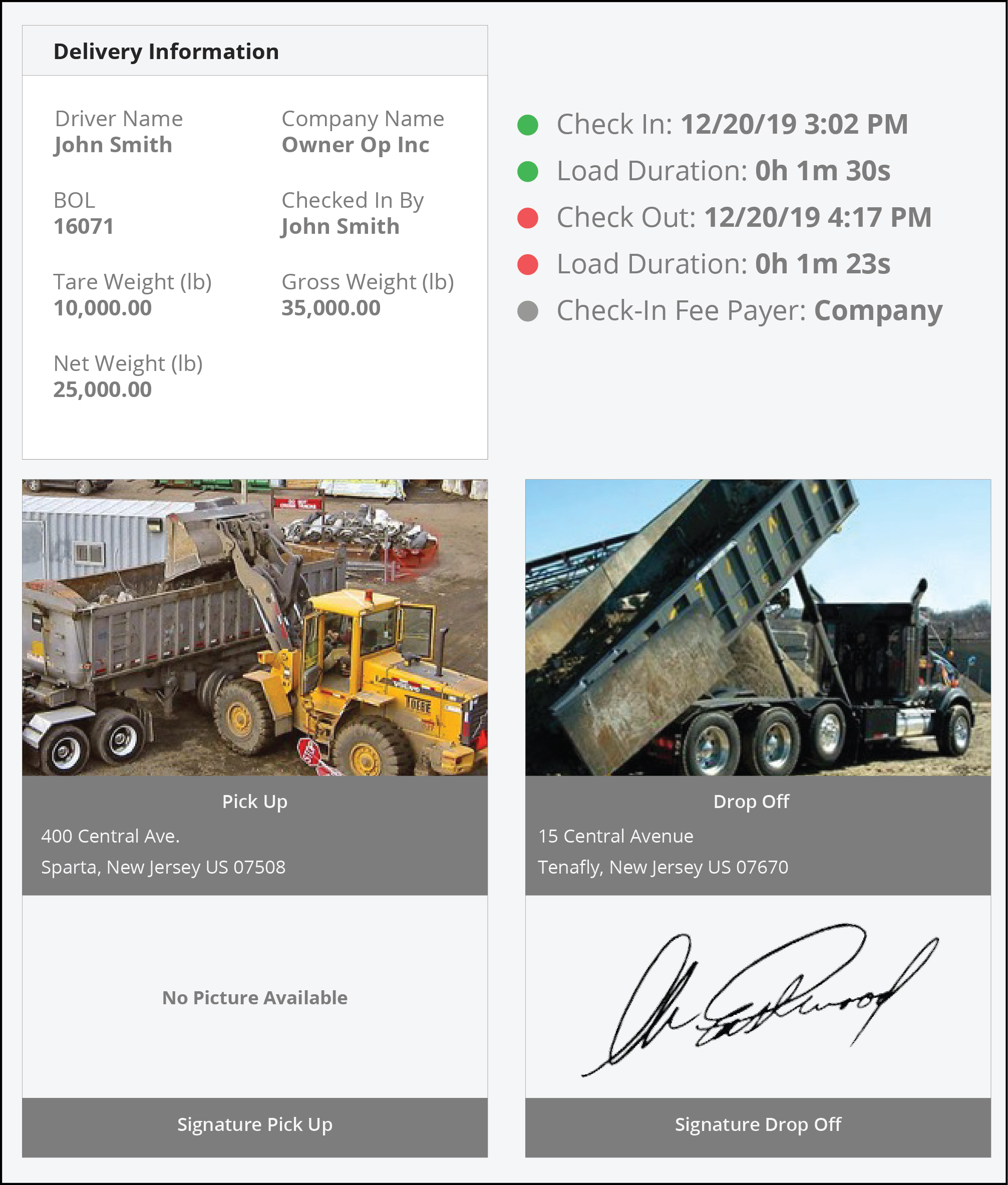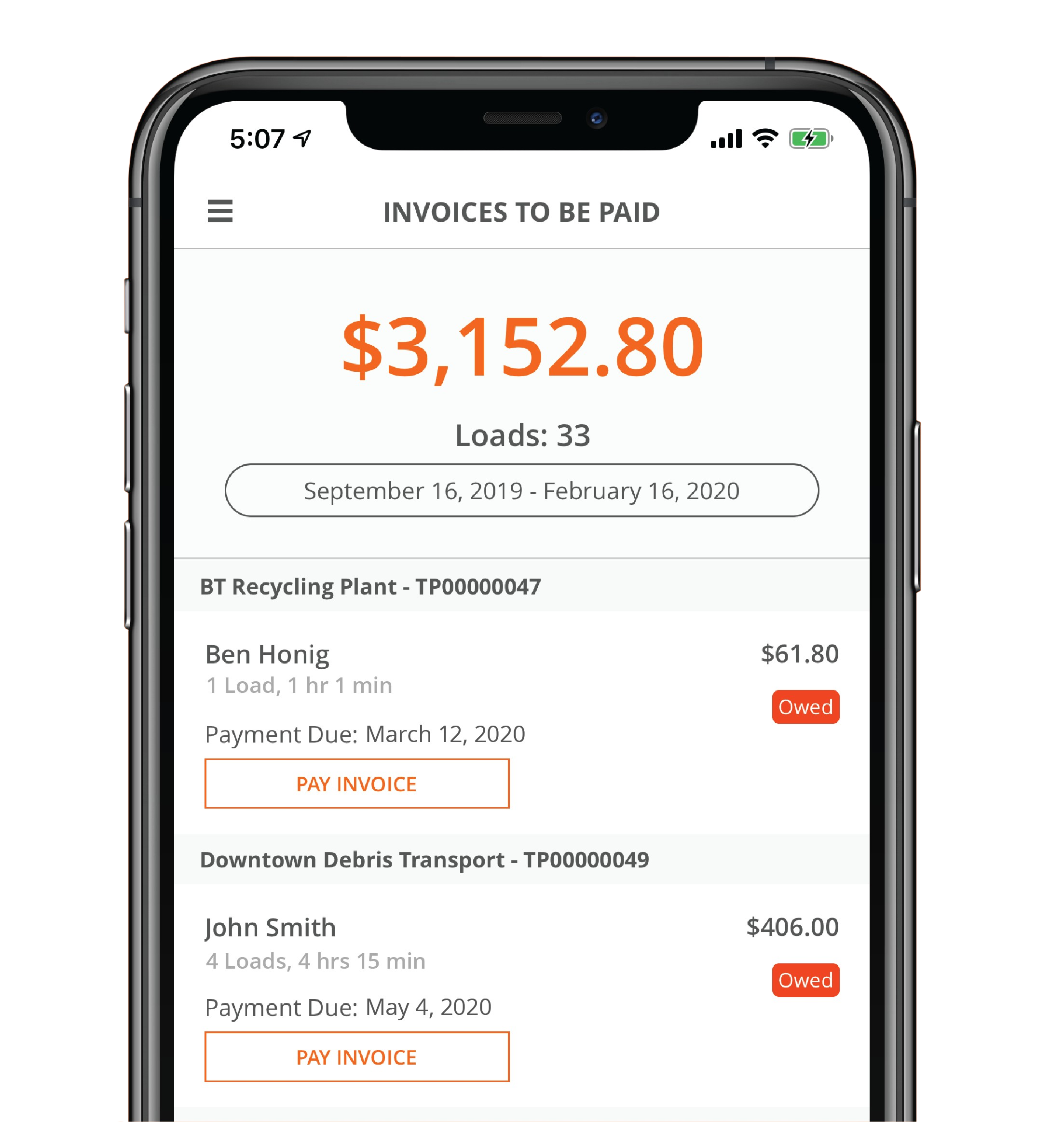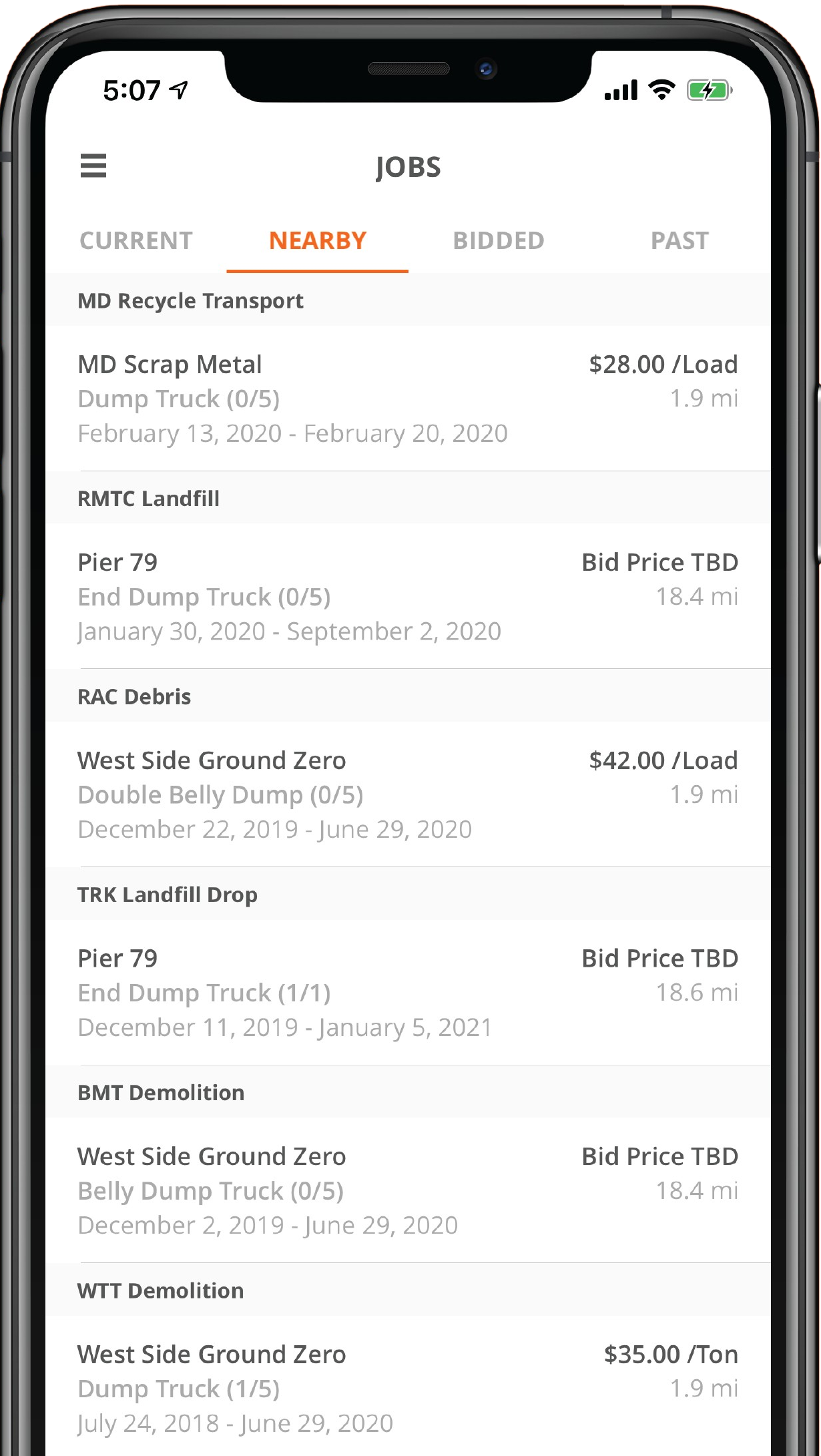Eliminate Paper Tickets From Your Aggregates Yard
GO GREEN
Integrate your drivers, and your aggregates facilities into
your network and use
TruckPay to eliminate the paper work.
-
No more lost tickets.
-
No more illegitimate tickets.
-
No more wasted time counting, sorting or validating tickets.
-
No need to photo scan tickets
LEVERAGE METRICS FROM REAL TIME MATERIAL TRACKING OF ALL AGGREGATE DELIVERIES.
-
How long does it take to load and unload trucks?
-
Which carriers are moving the most/least aggregates to which customers?




